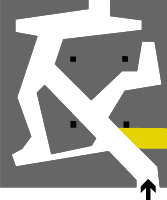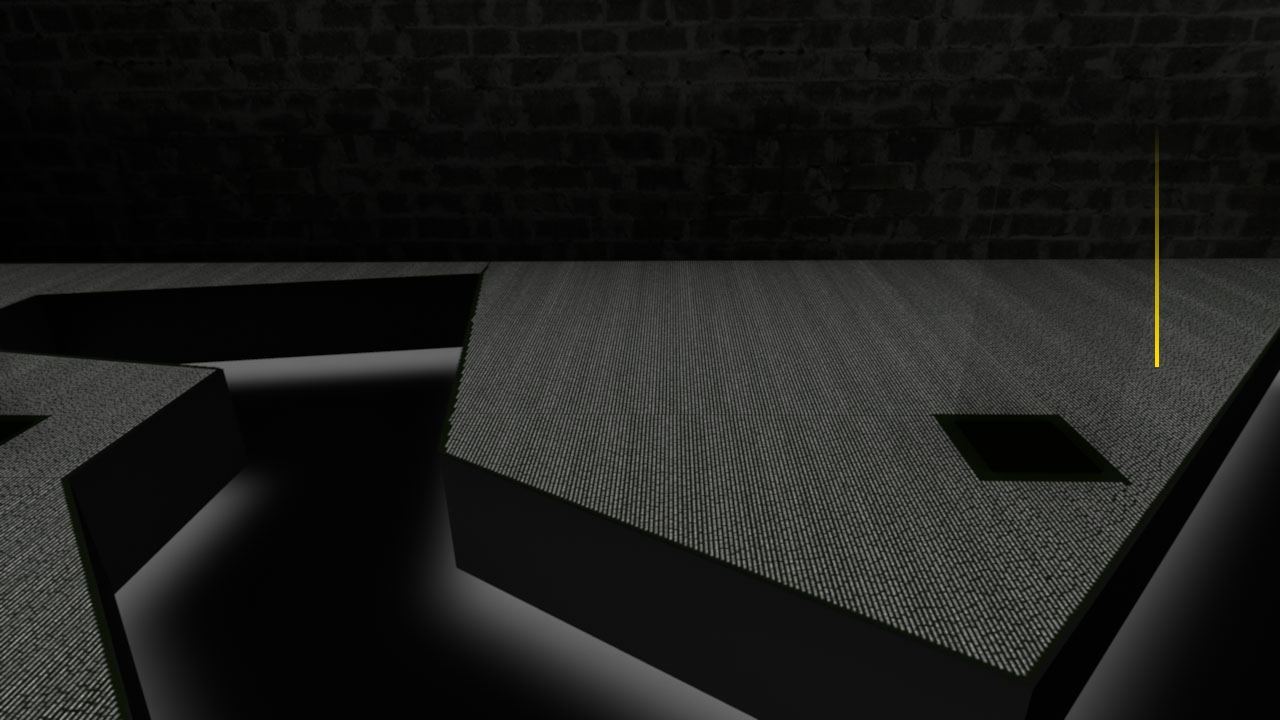Ildefonso Nalda Nájera 1876 - 1941
Born 23.1.1876 in Tricio
Died 4.4.1941 in Gusen
Biography
Ildefonso Nalda Nájera was born in 1876 in Tricio, a town in the Spanish province of Longroño (today the La Rioja autonomous community). In 1936 when already 60 years old, he was still working as a farmer. He was married to Felisa Pérez-Caballero, with whom he had had seven children, and in political and ideological terms his sympathies lay with the Izquiera Republicana (Republican Left) party.
In the journal Piedra de rayo,[1] Carlos Muntión has described the situation which led to Nalda Nájera’s forced departure from Spain – long before his death in the National Socialist concentration camp at Mauthausen. The tense political climate that prevailed shortly before the civil war had resulted in cases of harassment against the Nalda family. On 23 April 1936 the electoral commission named Ildefonso as a candidate for elector for the election of the president of the republic. The elections to choose the electors took place on 26 April and the boycott organised by the right produced an abstention rate of 75 per cent in Tricio. Ildefonso Nalda obtained the votes of 37 of his neighbours. After being subjected to increasing levels of harassment, Ildefonso finally decided to move to Najéra, the main town in the region, two kilometres away from Tricio.
On 18 July war broke out. Because this meant living under more difficult conditions and because of the possible consequences for members of the family, the following day Ildefonso and his three eldest children (Luis, Doroteo and Feliciano) decided to seek refuge in the nearby countryside. However, Ildefonso, his youngest son of 15 of the same name, known to all as Fonsito, tried in vain to flee to Madrid. After an unsuccessful escape attempt, some time later he was also able to rejoin his father and brothers.
One week after Idelfonso Nalda and his sons had gone to ground, the Francoist forces organised a hunt to drive them out of the mountains of the Camprovín; Feliciano, 27 years old, became separated from the group, was arrested and taken to the ‘Frontón’[2] prison in Beti-Jai in Logroño, to where his sisters Elisa and Araceli had also been transferred from the prison in Martutene, San Sebastián.
Ildefonso and his three sons spent the months from July to September sitting tight in the mountains in hiding. They moved only between nearby villages within the zone. Betrayed to the Guardia Civil (Civil Guard), they were surrounded on the night of 5 October and when, in the early hours of the morning, they left the hut where they had spent the night, they were shot. Luis (35 years old) and Doroteo (29 years old) died on the spot. Their father, injured, managed to escape. He made it to Nájera, met up his son Fonsita there, and the two of them decided to hide again in the mountains. One month later, hungry and without food, they were forced to return to Nájera to find provisions, and were discovered. Fonsito was arrested on 8 November at 5pm while trying to cross the river Najerilla. He remained in Nájera jail until 3 December and, after a trial at the juvenile court in Logroño, was interned for over a year in a correctional facility.
Three hours after the arrest of Fonsito, his mother Felisa was also arrested and also taken to the prison in Beti-Jai. There she was reunited with her two daughters, Elisa and Araceli. The three women of the family spent over a year in Beti-Jai. Her son Feliciano was also imprisoned in the same place. However, on 14 December he was collected from the ‘Frontón’ and shot at a place known as the ‘Barranca’ (ravine) in Lardero, close to the regional capital of Logroño. Jesús Vicente Aguirre confirmed that the three eldest sons of Ildefonso Nalda (Luis, Doroteo and Feliciano) were all shot.[3]
Ildefonso Nalda was still on the run. A childless couple was able to take him in at their house in Camprovín until he managed to make contact with his brother Felipe Nalda, who lived in the nearby village of Huércanos. Felipe set up his barn as a small hideaway for Ildefonso, who spent a whole two years there.
After they were released from prison and the correctional facility, Fonsito, his mother and his sisters were taken in by a woman living at Caballerías 21 in Logroño. Ildefonso Nalda also managed, at last, to reach this house, hidden inside a car. Without ever once setting foot outside, he lived there until April 1939, the end of the war. However, in light of the continuing persecution by the Francoist regime, the family decided to move to San Sebastián. There they had to live in hiding and, from fear of being recognised, Ildefonso – like many other Spanish refugees – fled to France. On 9 September, right at the beginning of the Second World War and France’s direct involvement in it, Ildefonso reached French soil with the help of a refugee network, travelling over the Pyrenees from Navarro.
The defeat of the Republicans in Spain and the subsequent arrival of thousands of Spanish exiles prompted the French authorities to establish ‘reception camps’. The camp in Gurs, near to Pau, was constructed in cooperation with the Basque exile government in spring 1939. Carlos Muntión has been able to find documentary evidence detailing where Ildefonso stayed before his arrival at his final, fateful destination. First he was in the camp at Gurs, which was close to the Spanish border in the Pyrénées-Atlantiques department in the French region of Aquitaine; and some time later on at a farm in the La Charente department in the east of France, around 350 kilometres north of Gurs.
According to Sandra Checa, Ángel del Río and Ricardo Martín,[4] a lot of Spanish refugees settled in the La Charente department after they were brought there from the border and were taken in by various villages. The Les Alliers camp was set up on the outskirts of Angoulême, the main city in La Charente.
German military forces occupied the city of Angoulême on 24 June 1940 with the approval of the collaborationist Vichy government. The administration of Les Alliers changed without any major noticeable alterations. But after a few weeks, rumours spread of the imminent arrival of a train in the camp that was to take the refugees back to Spain or to the free French zone. Finally, on 20 August, without any further explanation, 927 Spaniards were herded onto the train in the station at Angoulême (later known as the ‘Convoy of the 927’). As Adrián Blas Minguez has written, the train arrived in Mauthausen three days later, on 24 August.[5] Of the 927 deportees, 377 Spaniards were registered by the camp clerks, of whom 357 were murdered during their imprisonment.
On this day, prisoner numbers 3807 to 4237 were allocated. Ildefonso was assigned number 4219.[6] After four years of persecution, Ildefonso’s journey ended in the National Socialist Mauthausen concentration camp, site of the Wiener Graben quarry. At the end of 1939, Mauthausen was already overcrowded with prisoners and so construction began on the Gusen camp, located around five kilometres away and close to the Kastenhof quarry. It was finished in May 1940 and later known as Gusen I.
Prisoners were transferred to Gusen who, after the arrival of new deportees, were regarded as surplus to requirements at the main Mauthausen camp or were in a poor state of health. Ildefonso Nájera – his blue triangle marking him as ‘stateless’, registered as prisoner number 10893 and 65 years old – was transferred to Gusen, the real extermination camp. In the so-called Totenbuch (‘death book’) for the Gusen camp, the following entry was noted: ‘910 / Span. / 10893 / Nalda Nagera Ildefonso/ 23.1.76 / Tricio / Pleuritis / 4.4.41 / 7:30’.
Alfonso Rubio Hernández
[1] Carlos Muntión: Piedra de rayo. Revista riojana de cultura popular, no. 16, 2005, pp. 10–26.
[2] Translator’s note: Frontón is the name of a typical Basque ball game, which was and is also popular in La Rioja. At the same time, it also denotes a place where this game was played – a kind of stadium.
[3] Jesús Vicente Aguirre: Aquí nunca pasó nada. La Rioja, 1936 [Nothing Ever Happened Here. La Rioja, 1936] (Logroño 2008), p. 961.
[4] Sandra Checa/Ángel del Río/Ricardo Martín: Andaluces en los campos de Mauthausen [Andalusians in the Mauthausen camps] (Seville 2006), pp. 120 –121.
[5] Adrián Blas Minguez: Campo de Gusen. El cementerio de los republicanos españoles [The Gusen Camp. The Cemetery of the Spanish Republicans]. In: ’Memoria Viva’, Asociasión para el Estudio de la Deportación y el Exilio Español, Colección Monografías del exioil español 8 (Madrid 2010), pp. 41–42.
[6] Cf. Benito Bermejo/Sandra Checa. Libro Memorial: españoles deportados a los campos nazis, 1940–1945 [Memorial Book: Spaniards deported to the Nazi Camps, 1940–1945] (Madrid 2006), p. 465.
Location In room

